This site is a research tool specifically created and designed for individuals that “get it” and are looking for quick access to the latest and most reliable material available on the many interrelated issues of climate change to assist them to respond effectively in their own area of influence. It cuts through the dross to assist in good decision making and to facilitate action. It has a particular focus on Australia and what the international community is doing, or more specifically NOT doing. PLEA Network Coordinator, Hazen (About Us) 💡 for best viewing use a full screen
💡 To get the best value out of this site, open and read this first 💡 This site acts as a filter and pointer for individuals looking for specific climate change information/ resources. It is an entry point to the most active players in the global climate change arena. It is NOT a blog and you will find no mention of how to change a light bulb, make compost or insulate your house. I would suggest when first visiting this site you spend some time looking over the pages to see what sort of information is provided.There are: overviews; videos; latest news; articles; interactive maps; reports and a vast number of links to external sites. It is a continuing work in progress as new sites and information are found and the space of climate change evolves. Sources of all material can be accessed through the provided links to reports; articles and the “Read More here” links at the bottom of most articles. I have tried to make the navigation as logical and friendly as possible: there are a number of sub pages under the main pages; at the top of each page there is a “What you will find on this page” which details the sub headings and are jump links to the content; when clicking on an image it will either enlarge or go to an external link; the symbols ∨/∧ indicate “show & hide” text; text in blue indicates a link to further information; external links will open in a new tab; internal links and pdfs will open in the same page – remember to go back instead of closing page; and there is also a handy back to top button. To keep things tidy, posts will either become part of the static text or be archived as posts. The “archive library” provides a variety of ways to search for older posts. Home page also has a section – “Highlights recently added...” Once you have a good idea of what is on offer, home in on your issue/topic of interest. Revisit when you need to update info/resources to assist in any initiative you may be involved in – and go forth and multiply! When returning for updates check: date when I have last updated site (on right-hand side); main pages of interest (or search the “site topics index“) to see if there has been any new material added; latest news; and older posts through the “category” and “tag” options on the “archive library” page. Many of the a/v inserts/articles are offered on a “free share” basis. If you think something would be useful for presentations, etc please go to the source to obtain a copy. 💡 A final value tip: To turn information into knowledge try reading rather than just scanning. Turning that knowledge into understanding and action is up to you. As this site is a continuing work in progress – check in occasionally to see updates.
Our climate crisis comes from our relentless addiction to growth (read consumption) – it must stop
“Our core ecological problem is not climate change. It is OVERSHOOT, of which global warming is a symptom.” Richard Heinberg. Link to Overshoot Video
 2023: Time to cut to the chase/get a reality check: Humanity is in a predicament of its own making. The language around our changing climate needs to change – the reality is: there is no likelihood of a return to the “normal” climate of the past; no, “hope” is never “lost” as ANY positive / active response will always be needed for a long time to come; “despair” etc are emotions that are an indulgence of the well-off and unhelpful; technology will NOT get us out of this mess – but more than likely add to it; as global CO2 emissions are STILL growing the time lag between emission and the full warming effect can take several decades, if not centuries to emerge – we will be playing catch-up for decades to come (remember that other greenhouse gases are also adding to this warming). The predicament is complex and complicated – the necessary response also needs to be complex and complicated AND it WILL hurt!
2023: Time to cut to the chase/get a reality check: Humanity is in a predicament of its own making. The language around our changing climate needs to change – the reality is: there is no likelihood of a return to the “normal” climate of the past; no, “hope” is never “lost” as ANY positive / active response will always be needed for a long time to come; “despair” etc are emotions that are an indulgence of the well-off and unhelpful; technology will NOT get us out of this mess – but more than likely add to it; as global CO2 emissions are STILL growing the time lag between emission and the full warming effect can take several decades, if not centuries to emerge – we will be playing catch-up for decades to come (remember that other greenhouse gases are also adding to this warming). The predicament is complex and complicated – the necessary response also needs to be complex and complicated AND it WILL hurt!
IF you “get it” but need a quick update of the predicament and more realistic responses, please access the following:
- Fairyland of 2 degrees, I have recently rearranged this page for better navigation
- National Centre for Climate Restoration (Breakthrough);
- Club of Rome publications;
- Post Carbon Institute / Richard Heinberg;
- Understand the complexity of the science, especially carbon interation between atmosphere and oceans;
- Curbing our addiction to growth;
- Don’t forget to view the “Overshoot” video
SOME HIGHLIGHTS RECENTLY ADDED TO SITE:
Groundhog day revisited! If you regularly visit my site you may have noticed I do not post as much as in the past. I have found that the vast majority of “news” is just a repetition of what has been going on for decades. It is all too much talk and not enough action – same old same old – only our changing climate relentlessly continues on an upward trajectory. I will however continue to add the most interesting developments as time permits
- LINK: How Australia is cooking the emissions books – To understand how it has happened you need to follow the changing rules of global emission tracking: what IS “Net Zero” anyway; The Overshoot myth; and The Sleight of hand;
- Needing a quick CHECK ON THE PLANET’S VITAL SIGNS ? carbon dioxide levels; methan, ocean warming, etc.
- LINK: Does Nuclear Power have a Future in Australia?
- dangerous climate tipping points will affect Australia. The risks are real and cannot be ignored
- Interactive map showing how climate change impacts daily average temperatures – pick a date;
- Feeling a bit too comfortable these days? Why not visit the Uncomfortable Corner to bring in some new persepctives;
- If you are looking for specific information visit the Archive Library or just have a wander through the pages.
What you will find on this page: LATEST NEWS; Aust highest CO2 per capita; Too hot to handle: climate crisis report so secret; Home insurance soaring as climate risks grow (report); NASA CO2 build up in atmosphere (video); COP 28 the good, the bad, the ugly; Don’t know what tipping point are? (video); Net Zero by 2050, need to cut consumption; 1.5C looms; a different take on “overshoot”; 2021 6th warmest year (video); How Oz government fudges the figures; the hype of “Net Zero 2050”; State of the Climate Global 2020; State of the Climate Report (AUST) 2020 (video); Insurance: mice, floods and the climate crisis; REPORT: Climate Reality Check 2020; Big lie and shonky carbon credits: Front Line – Australia’s climate emergency (video); Oz biggest coal exporter in the world (report); Carbon Brief Profile: Australia; Preparing for the Era of Disasters (report); attribution mapping of extreme weather (interactive map); 2018 was the fourth warmest since 1880(temp trend visualisation); understanding our heatwave weather; 400 years to transform energy systems (graph); 2017 extends period of exceptional warm years; cost of natural disasters & resilience (report); REMEMBER: it is all in the language; Clarke & Dawe on the energy debate (video); global 2C warming limit not feasible; climate action time warp (video); Kiwis vs Oz (video); dumbest policy on earth; Solar SmackDown – Poms vs Oz (video); perspective in the debate (video): dangerous climate warming myth – reality; Australia in 2040; want to be counted (video);discouraged by scale; QUICK LINK TO HIGHLIGHTS RECENTLY ADDED
Latest News 21 November 2023, The Conversation: In September we went past 1.5 degrees. In November, we tipped over 2 degrees for the first time. What’s going on? In September, the world passed 1.5°C of warming. Two months later, we hit 2°C of warming. It’s fair to wonder what is going on. What we’re seeing is not runaway climate change. These are daily spikes, not the long-term pattern we would need to say the world is now 2 degrees hotter than it was in the pre-industrial period. These first breaches of temperature limits are the loudest alarms yet. They come as the United Nations Environment Program warns the world is still on a path to a “hellish” 3°C of warming by the end of the century. But they do not signal our failure. The sudden spike in warming in 2023 comes from a combination of factors – climate change, a strong El Niño, sea ice failing to reform after winter, reduced aerosol pollution and increased solar activity. There are also minor factors such as the aftermath of the volcanic eruption near Tonga. Read more here 16 November 2023, The Conversation: We’re burning too much fossil fuel to fix by planting trees – making ‘net zero’ emissions impossible with offsets. The idea that we can mitigate current carbon emissions by “offsetting” them with carbon reduction initiatives elsewhere has become central to government and business responses to climate change. But it’s an idea we need to seriously question. Essentially, the offsetting strategy assumes the release of carbon stored by ancient biology a hundred million years ago can be mitigated in the current active carbon cycle. Since the Kyoto protocol was signed, offsetting has become the preferred option globally. The concept of “net zero” carbon emissions is also at the heart of New Zealand’s official climate response and its Emissions Trading Scheme. How this might change under a new government is hard to predict, with the different positions held by the negotiating parties potentially leading to a “coalition of climate chaos”, according to one commentator. At one level, net zero makes sense. Planting trees to mitigate the effects of forest clearance – or to provide shade, stabilise land and enhance biodiversity – means carbon in the atmosphere can be sequestered where it otherwise would not be. But that doesn’t automatically mean the planet can absorb all the fossil carbon human industry continues to release. The idea that harm done in the present can be “offset” somewhere else in the future – something also seen in the field of freshwater ecology – cannot be taken at face value. How the carbon cycle works. To put things in perspective, global carbon emissions from burning fossil fuels are currently around 10 billion tonnes per year. If we continue emitting at this rate, total fossil fuel emissions from now to 2050 will be about 280 billion tonnes – seven times larger than the maximum estimated biological carbon sequestration of 38 billion tonnes from 2015 to 2050. Before humans began extracting fossil fuels, carbon cycled in a dynamic equilibrium: the total amount of carbon entering each carbon pool was balanced by the total amount of carbon leaving, so the amount of carbon stored did not change. Read more here 10 November 2023, James Hansen et el: How We Know that Global Warming is Accelerating and that the Goal of the Paris Agreement is Dead. Delayed response of climate makes human-made climate change a grave threat, especially for young people. Governments will not make required changes to energy policies based on theoretical threats – there must be sufficient empirical evidence of harm to force action. Thus, delayed response makes it difficult to avoid near-term, growing, climate impacts, but it does not prevent achievement of policies that will lead to a hospitable climate with a bright future for young people. Time is running short, however, and effective actions at this point require a good understanding of ongoing climate change and the responsible mechanisms. The proximate cause of ongoing global warming is Earth’s energy imbalance (EEI). Earth is now absorbing more energy incoming from the Sun than the planet is sending back to space as reflected solar light and emitted thermal (heat) radiation. As long as that imbalance is positive – more energy coming in than going out – Earth will continue to get hotter. Factors that alter Earth’s energy balance are called climate forcings. There are two large human-made climate forcings: changes of atmospheric greenhouse gases (GHGs) and changes of aerosols. GHGs reduce heat radiation to space; thus, an increase of GHGs causes a positive energy imbalance, more energy coming in than going out, which causes warming. Aerosols reflect sunlight to space, which is a negative contribution to EEI that causes cooling. Read more here 20 October 2023, Climate Home News: World Bank controversy sends loss and damage talks into overtime. Developing countries are outraged by a proposal to host a climate loss and damage fund at the World Bank, painting it as a US power grab. The president of the next UN climate summit, Cop28, has told government negotiators they must agree how to set up a new loss and damage fund before leaving the Egyptian city of Aswan. The United Arab Emirates’ Sultan Al Jaber addressed the 24 members of the transitional committee by video link on Friday morning, the last official day of talks. At Cop27 in Sharm el-Sheikh, governments tasked the committee with working out what a new loss and damage fund for climate victims should look like and present their proposals to Cop28 in November. The fund is supposed to channel money to people who have suffered loss and damage caused by climate change. This could mean rebuilding homes after a hurricane or supporting farmers displaced by recurrent drought. Failure to reach consensus risks delaying support to those in need. But developing countries were incensed by a proposal to host the fund at the World Bank, painting it as a US power grab. And rich-poor divides persisted on how to define the “vulnerable” groups eligible for funds and who gets to control spending. Al Jaber accused the negotiators of dragging their feet and told them not to leave this task to ministers. “I expect you to deliver,” he said. “If I don’t see real and tangible results, that will not be acceptable.” Read more here End Latest News 20 August 2024, The Conversation: The overshoot myth: you can’t keep burning fossil fuels and expect scientists of the future to get us back to 1.5°C. Record breaking fossil fuel production, all time high greenhouse gas emissions and extreme temperatures. Like the proverbial frog in the heating pan of water, we refuse to respond to the climate and ecological crisis with any sense of urgency. Under such circumstances, claims from some that global warming can still be limited to no more than 1.5°C take on a surreal quality. For example, at the start of 2023’s international climate negotiations in Dubai, conference president, Sultan Al Jaber, boldly stated that 1.5°C was his goal and that his presidency would be guided by a “deep sense of urgency” to limit global temperatures to 1.5°C. He made such lofty promises while planning a massive increase in oil and gas production as CEO of the Abu Dhabi National Oil Company. We should not be surprised to see such behaviour from the head of a fossil fuel company. But Al Jaber is not an outlier. Scratch at the surface of almost any net zero pledge or policy that claims to be aligned with the 1.5°C goal of the landmark 2015 Paris agreement and you will reveal the same sort of reasoning: we can avoid dangerous climate change without actually doing what this demands – which is to rapidly reduce greenhouse gas emissions from industry, transport, energy (70% of total) and food systems (30% of total), while ramping up energy efficiency… Overshoot: The way to understand this doublethink: that we can avoid dangerous climate change while continuing to burn fossil fuels – is that it relies on the concept of overshoot. The promise is that we can overshoot past any amount of warming, with the deployment of planetary-scale carbon dioxide removal dragging temperatures back down by the end of the century. This not only cripples any attempt to limit warming to 1.5°C, but risks catastrophic levels of climate change as it locks us in to energy and material-intensive solutions which for the most part exist only on paper. To argue that we can safely overshoot 1.5°C, or any amount of warming, is saying the quiet bit out loud: we simply don’t care about the increasing amount of suffering and deaths that will be caused while the recovery is worked on. The way to understand this doublethink: that we can avoid dangerous climate change while continuing to burn fossil fuels – is that it relies on the concept of overshoot. The promise is that we can overshoot past any amount of warming, with the deployment of planetary-scale carbon dioxide removal dragging temperatures back down by the end of the century. This not only cripples any attempt to limit warming to 1.5°C, but risks catastrophic levels of climate change as it locks us in to energy and material-intensive solutions which for the most part exist only on paper. To argue that we can safely overshoot 1.5°C, or any amount of warming, is saying the quiet bit out loud: we simply don’t care about the increasing amount of suffering and deaths that will be caused while the recovery is worked on. All climate policies and scenarios assume that these natural carbon sinks will continue to remove tens of billions of tons of carbon from the atmosphere each year. There is evidence that land-based carbon sinks, such as forests, removed significantly less carbon in 2023. If natural sinks begin to fail – something they may well do in a warmer world – then the task of lowering global temperatures becomes even harder. The only credible way of limiting warming to any amount, is to stop putting greenhouse gasses into the atmosphere in the first place. Read more here 5 September 2023, The Guardian: Australia has highest per capita CO2 emissions from coal in G20, analysis finds. Australia used twice as much electricity as China on a per capita basis and 48% of it came from coal plants, thinktank says. Australia still emits more greenhouse gas from burning coal on a per capita basis than other G20 countries despite a significant rise in solar and wind energy. While Australia and South Korea have cut per person emissions from coal-fired electricity since 2015 – by 26% and 10% respectively – they continue to release more CO2 than other major economies, according to an analysis by the energy thinktank Ember. China – the world’s biggest annual emitter in absolute terms – ranks third after its per capita emissions from coal power rose by 30% over seven years due to its growth in electricity use outpacing its growth in zero-emissions generation. It has installed 670 gigawatts of renewable energy capacity – about a third of the world’s solar and wind – since 2015. The Ember analysis, released before a G20 leaders’ summit in India starting on Saturday, said Australia used twice as much electricity as China on a per capita basis, and 48% of it came from coal plants. It was down from 64% in 2015 after an influx of solar and wind energy. But Australia’s per capita emissions from coal last year were more than four times the global average. Read more here 30 August 2023, The Guardian: The Australian government is refusing to release its secret report on how the climate crisis will fuel national security threats and is also refusing to say when it was completed. The government insists the date, too, is classified. The approach has sparked claims of a “cult of secrecy in Canberra”. Anthony Albanese ordered the Office of National Intelligence (ONI) last year to investigate national security threats posed by global heating, in line with an election promise. When it notified the United Nations of Australia’s stronger 2030 emissions reduction target, the government trumpeted its commitment to “an urgent climate risk assessment of the implications of climate change for national security”. So far, however, the government has rebuffed calls to release the assessment – or even a sanitised public version, as it did with the defence strategic review. In a new response to Senate questions on notice, the prime minister confirmed the ONI’s climate assessment was finalised “within the last 12 months”. But Albanese added: “The specific timing of the assessment board is classified.” Five other questions from the Greens’ defence spokesperson, David Shoebridge, were answered with an identical response: “The content and judgments of the assessment are classified.” Read more here US intelligence agency reports identify south and central Asia, the Pacific small island states and Indonesia as “highly vulnerable countries” of concern for climate disruption. South Asia, China and Indonesia are identified by the World Resources Institute as countries where water stress will be “extremely high” by 2040. Retired Admiral Chris Barrie, former Chief of the Australian Defence Force, has said repeatedly that brutal climate impacts will produce state instability and failure in both Asia and the Pacific, including in some of the most populous nations. This is especially true for those with semi-democratic governments and existing insurgencies, either domestically or in neighbour states. There will be a further retreat to authoritarian and hyper-nationalist politics, the diminution of instruments of regional cooperation, and increased risks of regional conflict, including over shared water resources from the Himalayas and the Tibetan plateau. This would encompass India, Pakistan, China and south-east Asian nations. Given these prospects, it was a welcome relief that the Albanese government shortly after coming to office ordered Australia’s first climate-security risk assessment. This was delivered by the Office of National Intelligence to cabinet in November 2022. Since then the Prime Ministers’ Office has refused to release a declassified version of the report, despite the fact that our allies have released declassified versions of their climate-security analyses. Nor has anyone in the government been willing to speak publicly about the main findings, or the issue more broadly. A federal government cone of silence has descended over the greatest threat to the human security of Australians, their wellbeing, health and safety in a hotter world. If a government’s first duty is to “protect the people”, surely the first step is to level with them about the risks we face. It seems that even parliamentarians, including those who sit on the foreign affairs and defence committees, have not been fully briefed on the national intelligence report. It is inconceivable that MPs and senators could do their job of formulating and reviewing policy and performance on this greatest of all threats if the national security committee of cabinet will not share with them intelligence analysis on the form and severity of that risk. Read more here Wanting to know more about this extraordinating situation? Read on… BREAKTHROUGH: What does Australia’s first climate and security risk assessment say? Access PDF here: What is in the ONI Report 5 April 2023: Former ADF chief calls for release of secret report into security threat posed by climate crisis Chris Barrie says global heating poses larger security threat than China, and Australians should be armed with this information. April 2023, Australian Security Leaders Climate Group, Climate Security UP FRONT Report. Access PDF here: ASLCG Report 27 June 2023, Carbon Brief: Fast-rising concentrations of carbon dioxide in the atmosphere are the main driver of human-caused global warming. Working out how to reduce these emissions is a cornerstone of international climate negotiations. However, unlike some other forms of pollution, this greenhouse gas is invisible to the human eye. This makes it harder to communicate the challenge of global warming to the public. But dramatic new visualisations by the US National Aeronautics and Space Administration – better known as NASA – show CO2 emissions build up in the atmosphere over the course of a year. The videos show CO2 emissions from a range of sources: human-caused burning of fossil fuels (yellow); human-caused burning biomass (red); land ecosystems (green) and the ocean (blue). The pulsing squares indicate the absorption of CO2 by land ecosystems and the ocean. The visualisations highlight the imbalance in CO2 emissions between the northern and southern hemispheres. They also show how CO2 is carried around the world on air currents once in the atmosphere. Read more here 19 May 2023, Climate Homes News: The UAE’s Cop28 presidency has gone all Clint Eastwood this week, by asking The Good, The Bad and The Ugly to be involved in the climate talks. Wearing the white hat on the new 31-member Cop28 advisory board are the likes of Hindou Ibrahim, a climate campaigner from Chad, and Saleemul Huq, who has called fossil fuel exploration a “crime against humanity”. On the other side of the saloon are four fossil fuel executives including Bob Dudley. A new study shows his old firm BP owes $377 billion a year in climate reparations but that is definitely not on the agenda of Cop28 president Sultan Al-Jaber seeing as The United Arab Emirates has appointed 31 people, including fossil fuel executives and climate campaigners, to its advisory board for November’s Cop28 climate talks. The group includes the chair of an Indian gas company, the former head of China’s national oil company, the ex-boss of the UK’s BP oil firm and the CEO of an Emirati oil and gas producer. It also features the head of the African climate foundation, a veteran Bangladeshi anti fossil-fuel campaigner and the former president of the climate-threatened Marshall Islands. The UAE government said the board brought together “the climate expertise of thought leaders from countries across six continents”. They said it includes “policy, industry, energy, finance, civil society, youth and humanitarian action” and “will provide guidance and counsel to the Cop presidency in the run up to Cop28 and beyond”. But Oil Change International campaigner Romain Ioualalen told Climate Home: “While there has clearly been an effort to make the advisory committee inclusive and diverse, it is deeply concerning to see oil and gas interests being consulted on how to run negotiations to phase out their products.” Read more here The above extract originally appeared as the foreword to the Climate Council’s report, ‘The lost years: Counting the costs of climate inaction in Australia‘. 28 April 2022, The Conversation: Many climate activists, scientists, engineers and politicians are trying to reassure us the climate crisis can be solved rapidly without any changes to lifestyle, society or the economy. To make the vast scale of change palatable, advocates suggest all we have to do is switch fossil fuels for renewable power, electric vehicles and energy efficiency technologies, add seaweed to livestock feed to cut methane and embrace green hydrogen for heavy industries such as steel-making. There’s just one problem: time. We’re on a very tight timeline to halve emissions within eight years and hit net zero by 2050. While renewables are making major inroads, the world’s overall primary energy use keeps rising. That means renewables are chasing a retreating target. My new research shows if the world’s energy consumption grows at the pre-COVID rate, technological change alone will not be enough to halve global CO₂ emissions by 2030. We will have to cut energy consumption 50-75% by 2050 while accelerating the renewable build. And that means lifestyle change driven by social policies. Read more here 22 April 2022, Climate Home News: The chances of keeping global temperature rise below 1.5C, the toughest goal of the Paris Agreement, are increasingly slim. “Well below 2C” is a stretch. Yet there has been little discussion at an international level on how to handle “overshoot” of those goals. A high-powered commission due to launch in May aims to break the silence. Climate diplomats are finalising a 15-strong lineup of former presidents, ministers and representatives of international organisations to explore options for deep adaptation, carbon dioxide removal (CDR) and geoengineering, Climate Home News can reveal. The Climate Overshoot Commission will address sensitive questions around the ethics and feasibility of potential ways to reverse warming that are problematic or unproven at large scale. Read more here. “Our core ecological problem is not climate change. It is OVERSHOOT, of which global warming is a symptom.” Richard Heinberg How Oz government fudges the figures Source: Renew Economy This is why the hype of “NET ZERO 2050” is but smoke and mirrors! SUMMARY: “Net Zero 2050” a dangerous illusion: Access here full Briefing Note Source: BreakThrough – National Centre for Climate Restoration 14 January 2021, Carbon Brief: With all the official climate data now in, the world’s surface temperatures in 2020 have been confirmed as effectively tied with 2016 as the warmest year on record. In this article, Carbon Brief explains why the year proved to be so remarkable across the planet’s oceans, atmosphere, cryosphere and surface. Access full report here Last year set a number of records for the Earth’s climate: The Bureau of Meteorology and CSIRO play an important role in monitoring, analysing and communicating observed and future changes in Australia’s climate. This sixth biennial State of the Climate report draws on the latest climate research, encompassing observations, analyses and projections to describe year-to-year variability and longer-term changes in Australia’s climate. The report is a synthesis of the science informing our understanding of climate in Australia and includes new information about Australia’s climate of the past, present and future. The science informs a range of economic, environmental and social decision-making by governments, industries and communities. Access full report here. Anomalies in annual mean sea surface temperature, and temperature over land, in the Australian region. Anomalies are the departures from the 1961–1990 standard averaging period. Sea surface temperature values (data source: ERSST v5, www.esrl.noaa.gov/psd/) are provided for a region around Australia (4–46 °S and 94–174 °E). Mice, floods and the climate crisis: why your insurance won’t cover society-wide catastrophes 9 June 2021, The Guardian: The best way to keep premiums down is to prevent climate change and the disasters it causes. No matter how much you pay for your home or car insurance, if your property is damaged by mouse plague, nuclear radiation, war or rising sea levels you are almost certainly on your own. If you’re lucky, your insurance might cover you against storms but maybe not against floods (you know the difference, right?). Likewise, your insurance almost certainly doesn’t cover you against storm surges or a dam bursting. Australians spend more than $10bn for non-life insurance products each year, even though there’s only a one in 500 chance your house will catch fire. That’s why there’s so much profit to be made in insurance. If a forecaster says something’s likely to happen, then it’s highly unlikely you’ll be able to get insurance against it. While insurance companies make their profit out of our fear of an individual catastrophe, they would lose their entire business if they insured against society-wide catastrophe. We take it for granted that insurance companies will pay out if an accident hits our car or house but most people rarely think about what will happen if catastrophe hits us all at once. Which is why the small print on insurance premiums is so small. While you can still get cyclone insurance in northern Australia, the prices are rising rapidly as global temperatures rise and tropical cyclone intensity increases. In response, the Morrison government announced a $10bn “reinsurance pool” to help lower insurance premiums for northern Australians. But not even the insurance industry thinks that will work. Read more here Get the latest Vital Signs of the Planet Latest Report Card for Australia 30 March 2020: The Conversation, A major scorecard gives the health of Australia’s environment less than 1 out of 10. 2019 was the year Australians confronted the fact that a healthy environment is more than just a pretty waterfall in a national park; a nice extra we can do without. We do not survive without air to breathe, water to drink, soil to grow food and weather we can cope with. Every year, we collate a vast number of measurements on the state of our environment: weather, oceans, fire, water, soils, vegetation, population pressure, and biodiversity. The data is collected in many different ways: by satellites, field stations, surveys and so on. We process this data into several indicators of environmental health at both national and regional levels. The report for 2019, released today, makes for grim reading. It reveals the worst environmental conditions in many decades, perhaps centuries, and confirms the devastating damage global warming and mismanagement are wreaking on our natural resources. Immediate action is needed to put Australia’s environment on a course to recovery. Read more here. And how did Ballarat do? The overall environmental score (out of 10) was 4.1, down from 4.5 in 2018. Global Transport of Australian Bushfire Smoke January 21, 2020, NASA’s Goddard Space Flight Center, This animation shows several high impact events across the globe between August 2019 and January 2020, including Hurricane Dorian (August to September 2019), major fire events in South America and Indonesia (August to September 2019), and extreme wildfires in Australia (December 2019 to January 2020). The local impacts of the Australian bushfires have been devastating to property and life in the country, while producing extreme air quality impacts throughout the region. As smoke from the massive fires has interacted with global weather, the transport of smoke plumes around the globe has accelerated into the upper troposphere and even the lowermost stratosphere, leading to long-range transport around the globe. The smoke from these bushfires will travel across the Southern Ocean, completing a global circumnavigation back around to Australia, and is particularly pronounced across the southern Pacific Ocean out to South America. Oz Govt playing with dodgy accounting to achieve its target, can they be stopped? 17 December 2019, Renew Economy, Why the battle over ‘Kyoto carryover’ is such a big deal for the climate? As delegates from the COP25 UN climate talks make their way home, many will be considering how it could be possible to resolve one of the core sticking For more background as to how all this came about read on… Kyoto Credits: as Australia cooks, the Coalition cooks the books World scientists’ warning of climate emergency 5 November 2019, BioScience Journal: Scientists have a moral obligation to clearly warn humanity of any catastrophic threat and to “tell it like it is.” On the basis of this obligation and the graphical indicators presented below, we declare, with more than 11,000 scientist signatories from around the world, clearly and unequivocally that planet Earth is facing a climate emergency. Most public discussions on climate change are based on global surface temperature only, an inadequate measure to capture the breadth of human activities and the real dangers stemming from a warming planet (Briggs et al. 2015). Policymakers and the public now urgently need access to a set of indicators that convey the effects of human activities on GHG emissions and the consequent impacts on climate, our environment, and society…. To secure a sustainable future, we must change how we live, in ways that improve the vital signs summarized by our graphs. Economic and population growth are among the most important drivers of increases in CO2 emissions from fossil fuel combustion (Pachauri et al. READ MORE HERE Professor Ross Garnaut offers another solution for Australia’s dilemna BREAKTHROUGH: Never before have we faced the level of threat that now confronts us. We stand on the edge of major ecological and social tipping points that could manifest in the coming decades. Demands for appropriate risk management and immediate action at emergency speed are now coming from some unexpected quarters.To protect human populations, environmental systems and to avoid further tipping points we are now told that it will be necessary to act as fast as humanly possible to lower the earth’s temperature to within a safe climate range. HOME FRONT documents the existential threat of climate change from a uniquely Australian economic and national security perspective. EPISODE ONE – EXISTENTIAL GAMBLE – Click on image to open video Climate State: If you need quick access to a range of videos on climate change matters access the Climate Science website. CLIMATE STATE features many feature films on important current climate science related topics, and often includes narrations by our staff. Access video list here Why Fed Govt needs to come clean about Australia’s emission impact – a picture paints a thousand words…there is NO moral ground 19 August 2019: AUSTRALIA INSTITUTE LATEST REPORT: The analysis, which compares emissions from burning fossil fuels mined and exported, also finds: Access their report here Carbon Brief Profile: Australia April 2019, Carbon Brief: In the seventh article of a series on how key emitters are responding to climate change, Carbon Brief looks at Australia’s complex climate politics and rising fossil fuel exports. Climate change is a top tier political issue in Australia. Debates over climate and energy policy have triggered several of the numerous changes of prime minister in recent years. Australia had the world’s 15th largest greenhouse gas emissions in 2015 and its citizens’ per-capita contribution is around three times the global average. It is the world’s second largest coal exporter and recently became the top exporter of liquified natural gas (LNG). Its electricity system remains heavily reliant on coal, despite ramping up the use of gas and renewables, especially rooftop solar. It is also highly vulnerable to the effects of climate change, including extreme heat, drought, bushfires and agricultural impacts. Based on its current trajectory, Australia is off track on its international pledge to cut emissions 26-28% by 2030 compared to 2005 levels. Access full analysis here Australia needs a national plan to face the growing threat of climate disasters 8 March 2019, Conversation: We are entering a new era in the security of Australia, not because of terrorism, the rise of China, or even the cybersecurity threat, but because of climate change. If the world warms beyond 2℃, as seems increasingly likely, an era of disasters will be upon us, with profound implications for how we organise ourselves to protect Australian lives, property and economic interests, and our way of life. The early warning of this era is arriving almost daily, in news reports from across the globe of record-breaking heatwaves, prolonged droughts, massive bushfires, torrential flooding, and record-setting storms. In a new special report from the Australian Strategic Policy Institute, I argue that Australia is not facing up to the pace of these worsening threats. We need a national strategy to deal specifically with climate disaster preparedness. Read more here Attributing extreme weather to climate change 6 July 2017, Carbon Brief: In the early 2000s, a new field of climate science research emerged that began to explore the human fingerprint on extreme weather, such as floods, heatwaves, droughts and storms. Known as “extreme event attribution”, the field has gained momentum, not only in the science world, but also in the media and public imagination because of the power it has to link the seemingly abstract concept of climate change with our own tangible experiences of the weather. Scientists have published more than 230 peer-reviewed studies looking at weather events around the world, from Hurricane Katrina to Russia’s 2010 heatwave. The result is mounting evidence that human activity is raising the risk of some types of extreme weather, especially those linked to heat. Carbon Brief’s analysis suggests 68% of all extreme weather events studied to date were made more likely or more severe by human-caused climate change. Heatwaves account for 43% such events, droughts make up 17% and heavy rainfall or floods account for 16%. Read more here 2018 fourth warmest year in continued warming trend, according to NASA, NOAA 6 February 2019, Global Climate Change (NASA): Earth’s global surface temperature in 2018 was the fourth warmest since 1880, according to independent analyses by NASA and the National Oceanic and Atmospheric Administration (NOAA). Global temperatures in 2018 were 1.5 degrees Fahrenheit (0.83 degrees Celsius) warmer than the 1951 to 1980 mean, according to scientists at NASA’s Goddard Institute for Space Studies (GISS) in New York. Globally, 2018’s temperatures rank behind those of 2016, 2017 and 2015. The past five years are, collectively, the warmest years in the modern record. “2018 is yet again an extremely warm year on top of a long-term global warming trend,” said GISS Director Gavin Schmidt. There are basically three (somewhat overlapping) reasons: These factors all intersect in much of the commentary related to this topic (and in many of the articles linked above), but it’s useful perhaps to tackle them independently. Read more here What is happening to our weather? 25 January 2019. If you would like to get a basic understanding of why our weather is behaving as it is access this article from The Conversation about the stubborn high-pressure system behind Australia’s record heatwaves. More about the Atmospheric Blocking Increase Climate change is thought to increase the frequency of large scale atmospheric pressure patterns with little or no movement—referred to as atmospheric blocking—by increasing changes in wave activity that exceeds the jet stream’s capacity.[1] Studies have begun to identify an anthropogenic component in recent blocking events that drove sustained extreme weather, including the 2003 European heatwave, the 2010 Moscow wildfires, the 2011 Texas and Oklahoma drought, and the 2011-2016 California drought. Access more here Is this where Australia is heading? Or, are we already there? Weather presenters in US increasingly including climate info in reports Local US weather casters have become one of the primary conduits for news on global warming. One nonprofit helped push the change. Steve LaPointe has been a television weatherman for nearly three decades, and for most of his career, he didn’t focus much on global warming. He was skeptical about the science behind it, particularly the notion that human behavior was heating the planet. But the issue wouldn’t go away. So LaPointe began to do “a lot of homework,” he said, reading research papers and consulting fellow meteorologists, who connected him with a nonprofit, Climate Central, that spreads information on climate change. LaPointe increasingly came to realize he was wrong — that the evidence that greenhouse gases are warming the Earth is “irrefutable.” Now, LaPointe routinely reports on the effects of climate change — from the escalated growth of poison ivy to a jump in the number of high-pollen days — alongside his usual seven-day nightly forecasts on CBS affiliate WRGB in Albany, New York. Many other weather presenters are following. Read more here and go to the Mainstreaming our changing climate page for what is happening in Australia. At this rate, it’s going to take nearly 400 years to transform the energy system 14 March 2018, MIT Technology Review: Here are the real reasons we’re not building clean energy anywhere near fast enough. Fifteen years ago, Ken Caldeira, a senior scientist at the Carnegie Institution, calculated that the world would need to add about a nuclear power plant’s worth of clean-energy capacity every day between 2000 and 2050 to avoid catastrophic climate change. Recently, he did a quick calculation to see how we’re doing. Not well. Instead of the roughly 1,100 megawatts of carbon-free energy per day likely needed to prevent temperatures from rising more than 2 ˚C, as the 2003 Science paper by Caldeira and his colleagues found, we are adding around 151 megawatts. That’s only enough to power roughly 125,000 homes. At that rate, substantially transforming the energy system would take, not the next three decades, but nearly the next four centuries.Read More here Carbon dioxide can remain in the atmosphere for thousands of years and takes about a decade to reach its maximum warming effect. In other words, even with all the changes we’ve already seen, we have yet to experience the full impact of the carbon we spewed in 2008 and every year since. NOTE: Comments re Australia’s growing emissions. For more information go to carbon budget 2017 also go here “500-year” floods are based not on history, but on probability REMEMBER: It is all in the language IN IPCC LANGUAGE If an event is virtually certain, there is a greater than 99% probability that it will occur. When you read IPCC/UN reports and see these terms have a think about the probability rating of ordinary activities that we all normally insure against: Clarke and Dawe absolutely nail the Australian energy debate Global 2C warming limit not feasible, warns top economist 4 January 2017, Climate Home, With “extreme policy measures”, a 2.5C limit is in reach, according to latest climate model from William Nordhaus. Agreed by 195 countries in December 2015, the Paris climate deal was billed as an historic game-changer by UN officials when it came into force last November. Not everyone is convinced, least of all the respected climate economist William Nordhaus, who dismisses the deal as “rhetoric” in a new paper. The Yale academic – who has explored the implications of climate change since the early 1990s – ran the numbers through his economic model known as DICE and came up with some bleak answers. “The international target for climate change with a limit of 2C appears to be infeasible with reasonably accessible technologies – and this is the case even with very stringent and unrealistically ambitious abatement strategies,” he writes. “This is so because of the inertia of the climate system, of rapid projected economic growth in the near term, and of revisions in several elements of the model. A target of 2.5C is technically feasible but would require extreme policy measures.” Nearly 200 countries submitted climate plans as part of the Paris deal. Independent analysts reckon their combined emission cuts will only limit warming to 2.7C above pre industrial levels, breaching the global target and likely to lead to faster sea level rise and erratic weather events. Ramming home the message, Nordhaus says: “notwithstanding what may be called ‘The Rhetoric of Nations,’ there has been little progress in taking strong policy measures.” Access full report here: PROJECTIONS AND UNCERTAINTIES ABOUT CLIMATE CHANGE IN AN ERA OF MINIMAL CLIMATE POLICIES Open the Climate Council Time Warp here Another neighbour leaves Oz in its dust The International Energy Agency estimates that countries spent $US493 billion on consumption subsidies for fossil fuels in 2014, while the UK’s Overseas Development Institute suggests G20 countries alone devoted an additional $US450 billion to producer supports that year. Throw in the unpaid environmental and climate impacts, and the International Monetary Fund puts total annual subsidies for fossil fuels at more than $5 trillion. Read More here If the Poms can do it why can’t Oz? It’s the economy that needs to be integrated into the environment – not the other way around Risk = potential future damage x probability of occurrence And where is the leadership? The report continues….. “The reasons for not doing what is obviously in our collective best interest have been widely canvassed, but one striking element is the lack of public ideas leadership. How many figures of public standing in Australia are prepared to consistently canvas the main issues discussed here, even if we disagree about some of the details? You could count them on the fingers of one hand. In fact, how many are prepared to talk about these issues in the public arena at all? Timidness and a relentless bright-siding infuse the public conversation, as if people cannot bear to hear the truth. But what if public is more prepared for the conversation than are our public ideas leaders? Recent work by Melanie Randle and Richard Eckersley investigated the perceived probability of threats to humanity and different responses to them (nihilism, fundamentalism and activism) in the US, UK, Canada and Australia: So here is the great irony: people have got a fair, intuitive sense of what might be coming, but our ideas leaders can’t talk about it. Now is the time to press those who aspire to leadership on climate issues and action to ask the questions that prompted the writing of this discussion paper. If the propositions are contentious, let’s debate them rather than keeping them hidden under a cone of silence. Repressing troubling thoughts does not resolve them, but means only they will come back to haunt us in an increasingly intense manner.” Read the full report here Dangerous climate warming – myth & reality I have recently come across the following report, again, since I downloaded it in October 2014 – It is even more relevant since the COP21. The stated purpose of international climate negotiations is to avoid “dangerous” climate change or, more formally to prevent “dangerous anthropogenic interference with the climate sytem”. But if conditions existing today are already sufficient to push more climate system elements past their tipping points and create “catastrophic” breakdown without any further emissions, what then is our purpose and what do we say? This report explores recent scientific literature to explore seven myths of the predominant climate policy-making paradigm: WRONG! Access full report here Do you need an idea of what it might be like in 2040? Prof. Jean Palutikof founding Director of the National Climate Change Adaptation Research Facility (NCCARF) at Griffith University, provides a graphic picture that might be useful. Why do I think her view is worth considering? Professor Palutikof was based at the UK Met Office during which time she managed the production of the Intergovernmental Panel on Climate Change (IPCC) Fourth Assessment Report for Working Group II (Impacts, Adaptation and Vulnerability). Professor Palutikof is among the foremost scholars of climate change adaptation and was lead author and review editor for several assessments of the Intergovernmental Panel on Climate Change (IPCC). Access article here Read More here Following is the conclusion of the Hansen et al report (Ice Melt, Sea Level Rise and Superstorms: Evidence from Paleoclimate Data, Climate Modeling, and Modern Observations that 2°C Global Warming is Highly Dangerous) Our finding of global cooling from ice melt calls into question whether global temperature is the most fundamental metric for global climate in the 21st century. The first order requirement to 44 stabilize climate is to remove Earth’s energy imbalance, which is now about +0.6 W/m2 , more energy coming in than going out. If other forcings are unchanged, removing this imbalance requires reducing atmospheric CO2 from ~400 ppm to ~350 ppm (Hansen et al., 2008, 2013a). The message that the climate science delivers to policymakers, instead of defining a safe “guardrail”, is that fossil fuel CO2 emissions must be reduced as rapidly as practical. Hansen et al. (2013a) conclude that this implies a need for a rising carbon fee or tax, an approach that has the potential to be near-global, as opposed to national caps or goals for emission reductions. Although a carbon fee is the sine qua non for phasing out emissions, the urgency of slowing emissions also implies other needs including widespread technical cooperation in clean energy technologies (Hansen et al., 2013a). The task of achieving a reduction of atmospheric CO2 is formidable, but not impossible. Rapid transition to abundant affordable carbon-free electricity is the core requirement, as that would also permit production of net-zero-carbon liquid fuels from electricity. The rate at which CO2 emissions must be reduced is about 6%/year to reach 350 ppm atmospheric CO2 by about 2100, under the assumption that improved agricultural and forestry practices could sequester 100 GtC (Hansen et al., 2013a). The amount of CO2 fossil fuel emissions taken up by the ocean, soil and biosphere has continued to increase (Fig. S23), thus providing hope that it may be possible to sequester more than 100 GtC. Improved understanding of the carbon cycle and non-CO2 forcings are needed, but it is clear that the essential requirement is to begin to phase down fossil fuel CO2 emissions rapidly. It is also clear that continued high emissions are likely to lock-in continued global energy imbalance, ocean warming, ice sheet disintegration, and large sea level rise, which young people and future generations would not be able to avoid. Given the inertia of the climate and energy systems, and the grave threat posed by continued high emissions, the matter is urgent and calls for emergency cooperation among nations. Key Information and Resource Sites Australian Alliances for climate change action (c/- ACF website) Project: Local Earth Awareness Network was established in 1988 to help raise the awareness of the local community to the environmental crises that face humanity and ways to respond at the local community level. The need to “THINK Globally and ACT Locally” is even more urgent now.The overshoot myth: you can’t keep burning fossil fuels and expect scientists of the future to get us back to 1.5°C
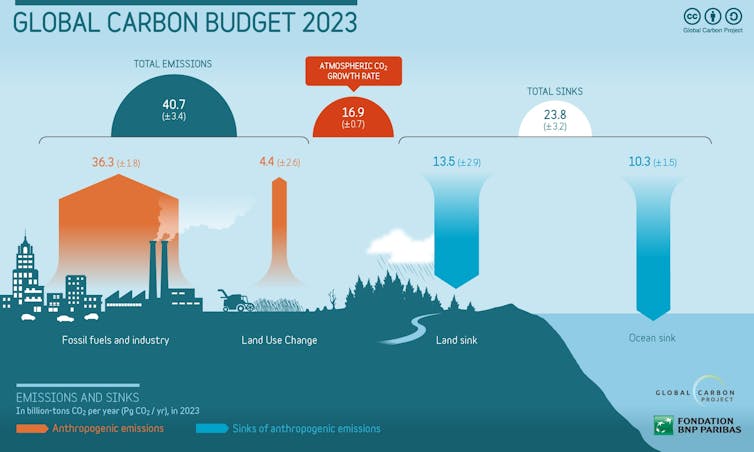
Australia has highest per capita CO2 emissions from coal in G20, analysis finds
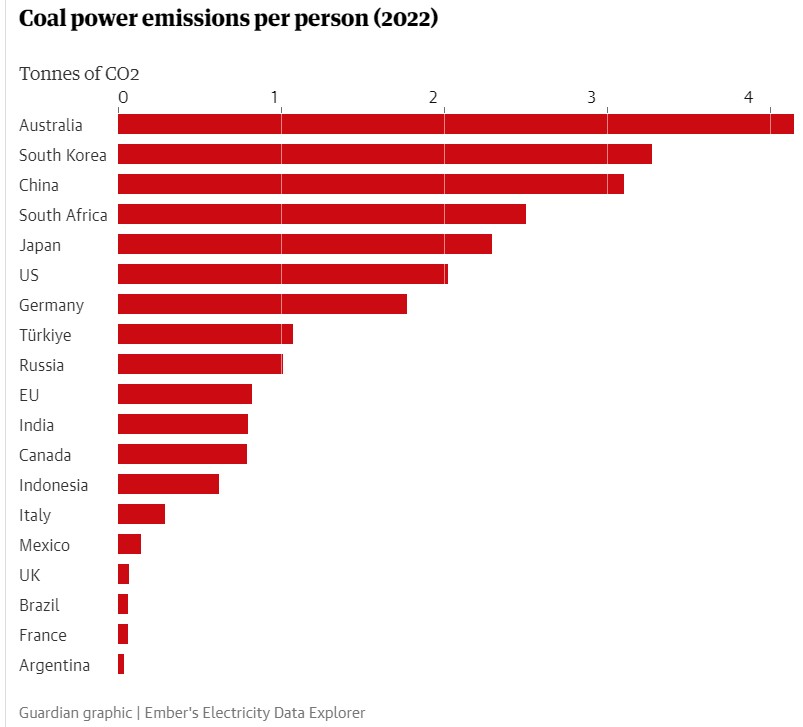
Too hot to handle: climate crisis report so secret Albanese government won’t even reveal date it was completed
 23 August 2023, Climate Code Red: Australia’s greatest security threat is a Canberra secret. It’s a no-brainer: China is the greatest threat to Australians’ future. The government and the opposition and the Sinophobic commentators tell us so. Often. Then there is AUKUS, the Quad, the endless regional hand-shaking, more joint military exercises, nuclear-powered submarines and upgraded US bases in Australia’s north. But there is a much greater security threat that the government seems determined to keep secret. The World Economic Forum each year surveys public and private sector global leaders on the biggest risk the world faces and publishes the results. Their 2023 survey finds that the biggest three risks in the decade from now were all climate-related, whilst “geo-economic confrontation” (read China) came in ninth. In 2021, the respected UK think tank Chatham House analysed the risks of climate disruption and came to a startling conclusion: global demand for food would increase 50 per cent by 2050, while crop yields would fall 20 to 30 per cent due to drought and desertification, extreme heat and chronic water shortages. The average proportion of global cropland affected by severe drought would likely rise to 32 per cent a year by 2050, and in Australia closer to 40 per cent a year. The report concluded that cascading climate impacts will “drive political instability and greater national insecurity, and fuel regional and international conflict”.
23 August 2023, Climate Code Red: Australia’s greatest security threat is a Canberra secret. It’s a no-brainer: China is the greatest threat to Australians’ future. The government and the opposition and the Sinophobic commentators tell us so. Often. Then there is AUKUS, the Quad, the endless regional hand-shaking, more joint military exercises, nuclear-powered submarines and upgraded US bases in Australia’s north. But there is a much greater security threat that the government seems determined to keep secret. The World Economic Forum each year surveys public and private sector global leaders on the biggest risk the world faces and publishes the results. Their 2023 survey finds that the biggest three risks in the decade from now were all climate-related, whilst “geo-economic confrontation” (read China) came in ninth. In 2021, the respected UK think tank Chatham House analysed the risks of climate disruption and came to a startling conclusion: global demand for food would increase 50 per cent by 2050, while crop yields would fall 20 to 30 per cent due to drought and desertification, extreme heat and chronic water shortages. The average proportion of global cropland affected by severe drought would likely rise to 32 per cent a year by 2050, and in Australia closer to 40 per cent a year. The report concluded that cascading climate impacts will “drive political instability and greater national insecurity, and fuel regional and international conflict”.Home insurance soaring as climate risks grow
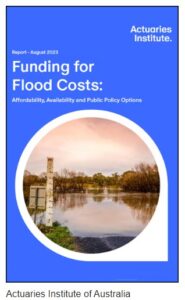 18 August 2023, The Conversation: Home insurance bills are soaring as climate risks grow. The government should step in. The Actuaries Institute of Austalia has just confirmed what many Australian households already know – home insurance is increasingly unaffordable. It found average premiums climbed 28% in the year to March, while premiums for higher-risk properties, such as those in flood-prone areas, climbed 50%. The institute also found 12% of Australian households – 1.24 million – are experiencing extreme home insurance affordability stress, defined as paying more than four weeks of gross household income on premiums. Twelve months ago, this figure was 10%, or 1 million households. Insurers are increasing premiums in locations at high risk of climate-related damage throughout the world and even withdrawing home insurance completely in places such as California and Florida. The high premiums are spreading to households in lower-risk locations through a complex interconnected system of rising private reinsurance charges (insurance for insurers), more frequent and worse weather events, and increasing rebuilding costs. The case for a government-owned reinsurance pool. The Actuaries Institute put forward risk pooling as an emergency solution. It would work through a government-owned and run “reinsurance pool”, providing nationwide coverage for claims relating to extreme weather events. Private insurers would pass on their risk to the state-owned pool, which would use the pooled premiums to ensure every insurer was covered. In the past, the insurance industry has been overwhelmingly opposed to the idea, viewing it as interfering in a traditionally private market. As recently as March 2022, as Queensland and NSW reeled in the aftermath of catastrophic flooding and its implications for insurance, the Insurance Council of Australia responded to calls to extend the newly created cyclone reinsurance pool by saying the private sector did things better. The industry’s concerns are not totally unfounded. Setting up a risk pool without taking steps to mitigate the underlying risk would simply mask, or even exacerbate, the problem. It could facilitate insurance and rebuilding in high-risk areas that will suffer repeated losses. Access report here Read more here
18 August 2023, The Conversation: Home insurance bills are soaring as climate risks grow. The government should step in. The Actuaries Institute of Austalia has just confirmed what many Australian households already know – home insurance is increasingly unaffordable. It found average premiums climbed 28% in the year to March, while premiums for higher-risk properties, such as those in flood-prone areas, climbed 50%. The institute also found 12% of Australian households – 1.24 million – are experiencing extreme home insurance affordability stress, defined as paying more than four weeks of gross household income on premiums. Twelve months ago, this figure was 10%, or 1 million households. Insurers are increasing premiums in locations at high risk of climate-related damage throughout the world and even withdrawing home insurance completely in places such as California and Florida. The high premiums are spreading to households in lower-risk locations through a complex interconnected system of rising private reinsurance charges (insurance for insurers), more frequent and worse weather events, and increasing rebuilding costs. The case for a government-owned reinsurance pool. The Actuaries Institute put forward risk pooling as an emergency solution. It would work through a government-owned and run “reinsurance pool”, providing nationwide coverage for claims relating to extreme weather events. Private insurers would pass on their risk to the state-owned pool, which would use the pooled premiums to ensure every insurer was covered. In the past, the insurance industry has been overwhelmingly opposed to the idea, viewing it as interfering in a traditionally private market. As recently as March 2022, as Queensland and NSW reeled in the aftermath of catastrophic flooding and its implications for insurance, the Insurance Council of Australia responded to calls to extend the newly created cyclone reinsurance pool by saying the private sector did things better. The industry’s concerns are not totally unfounded. Setting up a risk pool without taking steps to mitigate the underlying risk would simply mask, or even exacerbate, the problem. It could facilitate insurance and rebuilding in high-risk areas that will suffer repeated losses. Access report here Read more here ‘Striking’ new NASA videos show CO2 emissions rapidly building up in atmosphere
ON THE WAY TO COP 28 – what will happen when the fox is let into the chicken coop?
The Good, The Bad and The Ugly – Climate Weekly
 the company he leads (Adnoc) owes $318 billion a year. Then there’s the downright ugly. The UAE’s ambassador to Syria issued a formal invitation to Bashar al-Assad. A Cop28 spokesperson said they wanted to “have everyone in the room”. Read more here
the company he leads (Adnoc) owes $318 billion a year. Then there’s the downright ugly. The UAE’s ambassador to Syria issued a formal invitation to Bashar al-Assad. A Cop28 spokesperson said they wanted to “have everyone in the room”. Read more hereWhat are climate tipping points?
Net zero by 2050 will hit a major timing problem technology can’t solve. We need to talk about cutting consumption – it’s about time!
As 1.5C overshoot looms, a high-level commission will ask: what next?
A different take on “overshoot”
2021 Tied for 6th Warmest Year in Continued Trend, NASA Analysis Shows
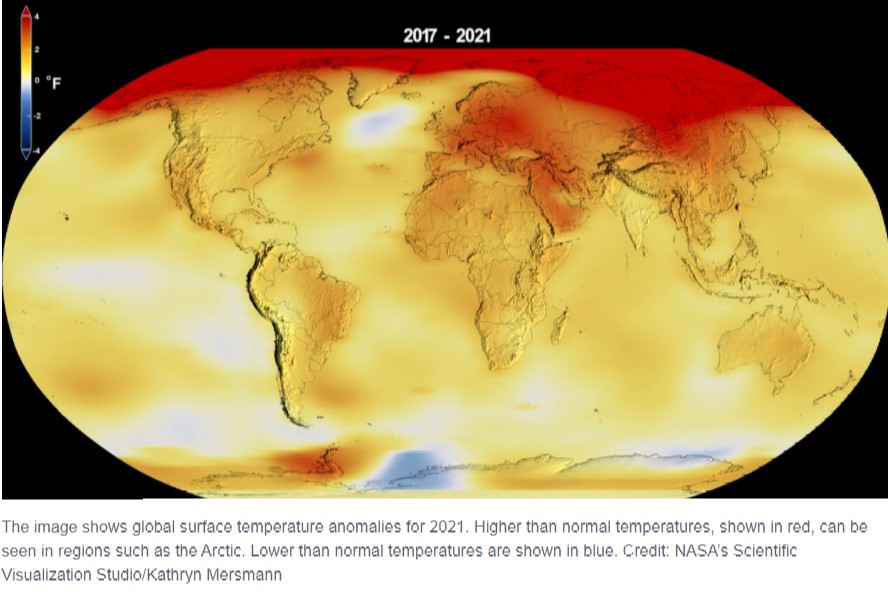 13 January 2022, NASA: Earth’s global average surface temperature in 2021 tied with 2018 as the sixth warmest on record, according to independent analyses done by NASA and the National Oceanic and Atmospheric Administration (NOAA). Continuing the planet’s long-term warming trend, global temperatures in 2021 were 1.5 degrees Fahrenheit (0.85 degrees Celsius) above the average for NASA’s baseline period, according to scientists at NASA’s Goddard Institute for Space Studies (GISS) in New York. NASA uses the period from 1951-1980 as a baseline to see how global temperature changes over time. Collectively, the past eight years are the warmest years since modern recordkeeping began in 1880. This annual temperature data makes up the global temperature record – which tells scientists the planet is warming. According to NASA’s temperature record, Earth in 2021 was about 1.9 degrees Fahrenheit (or about 1.1 degrees Celsius) warmer than the late 19th century average, the start of the industrial revolution. Read more here. Watch the video below to “get it”!
13 January 2022, NASA: Earth’s global average surface temperature in 2021 tied with 2018 as the sixth warmest on record, according to independent analyses done by NASA and the National Oceanic and Atmospheric Administration (NOAA). Continuing the planet’s long-term warming trend, global temperatures in 2021 were 1.5 degrees Fahrenheit (0.85 degrees Celsius) above the average for NASA’s baseline period, according to scientists at NASA’s Goddard Institute for Space Studies (GISS) in New York. NASA uses the period from 1951-1980 as a baseline to see how global temperature changes over time. Collectively, the past eight years are the warmest years since modern recordkeeping began in 1880. This annual temperature data makes up the global temperature record – which tells scientists the planet is warming. According to NASA’s temperature record, Earth in 2021 was about 1.9 degrees Fahrenheit (or about 1.1 degrees Celsius) warmer than the late 19th century average, the start of the industrial revolution. Read more here. Watch the video below to “get it”!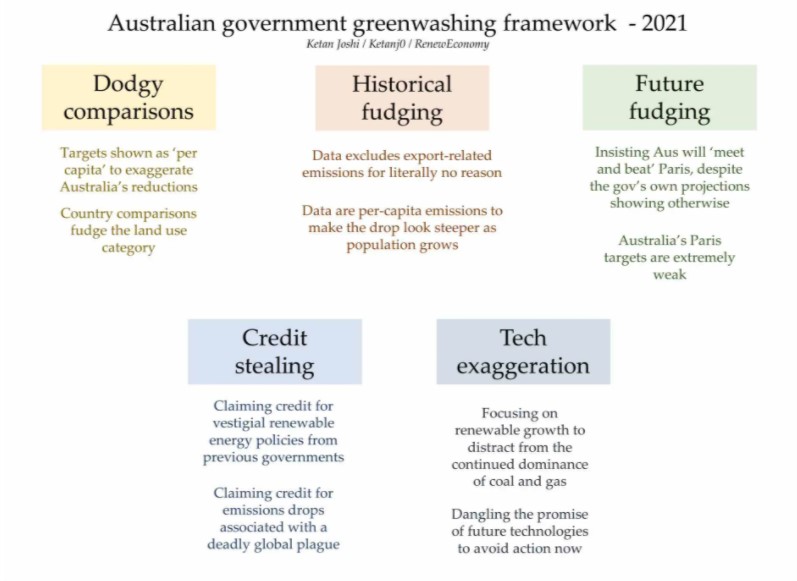
State of the climate – GLOBAL: 2020 ties as warmest year on record
State of the Climate (AUST) 2020 – BOM/CSIRO report
Key points – Australia

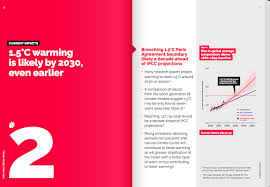 13 October 2020: Breakthrough’s latest publication,
13 October 2020: Breakthrough’s latest publication, ![]() Climate Reality Check 2020 draws together current climate science research to present 20 critical understandings, observations and insights to help inform and guide the stark choices that now stand before us. Climate Reality Check 2020 is a resource designed to help climate practitioners, advocates, journalists, business leaders and policymakers better understand the alarming mismatch between the current climate risks and the considerably inadequate level of climate action.
Climate Reality Check 2020 draws together current climate science research to present 20 critical understandings, observations and insights to help inform and guide the stark choices that now stand before us. Climate Reality Check 2020 is a resource designed to help climate practitioners, advocates, journalists, business leaders and policymakers better understand the alarming mismatch between the current climate risks and the considerably inadequate level of climate action.
Ballarat Score Card 2019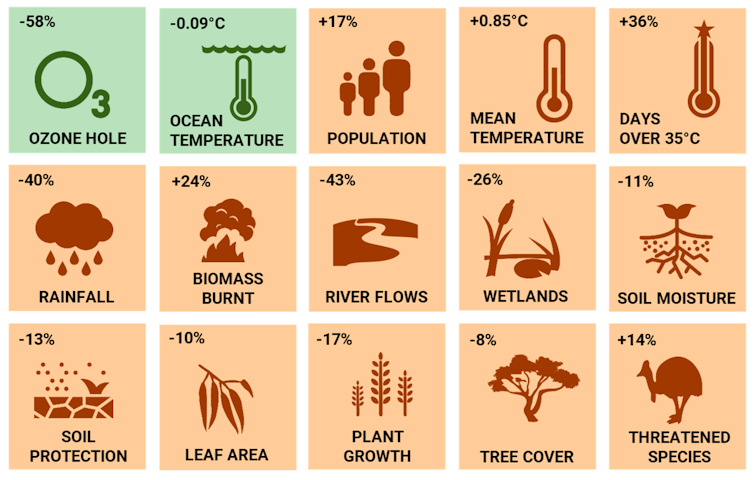
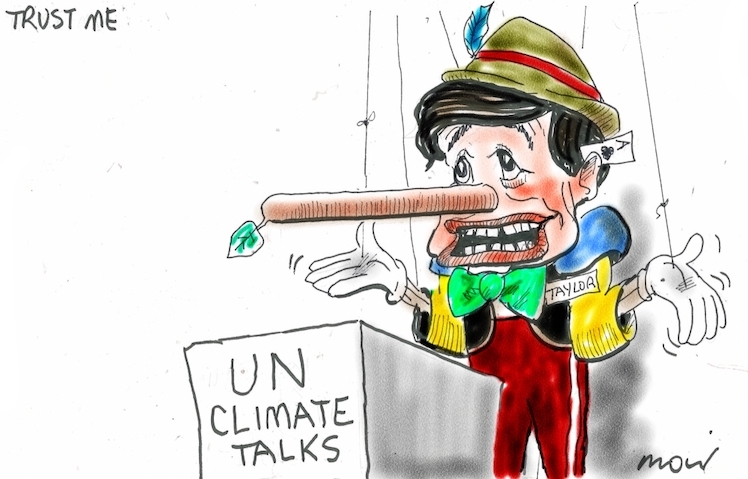 points for negotiators could be resolved in time for the next round of talks in Glasgow. Much of the battles between negotiators in Madrid focused on the issue of surplus emissions permits leftover from the Kyoto protocol. As the global climate governance is set to transition from the constrained Kyoto Protocol into the all encompassing Paris Agreement, a small group of countries, including Australia, China, India the United States and Brazil, fought to protect their favourable position, created under the Kyoto Protocol through soft targets and convenient accounting loopholes. Australia neither succeeded in securing agreement at the UN talks to allow for surplus Kyoto-era units to be carried over into the Paris Agreement nor was Australia prevented from doing so. In failing to reach an agreement in Madrid, negotiators will reconsider the issue at the next round of talks to be held in Glasgow in late 2020. The level of attention given to the issue, and the resulting frustration expressed by negotiators on both sides, reflects the scale of emissions reductions that could be put as risk if countries conceded to the demands that surplus Kyoto units be carried over into the Paris Agreement. Read more here
points for negotiators could be resolved in time for the next round of talks in Glasgow. Much of the battles between negotiators in Madrid focused on the issue of surplus emissions permits leftover from the Kyoto protocol. As the global climate governance is set to transition from the constrained Kyoto Protocol into the all encompassing Paris Agreement, a small group of countries, including Australia, China, India the United States and Brazil, fought to protect their favourable position, created under the Kyoto Protocol through soft targets and convenient accounting loopholes. Australia neither succeeded in securing agreement at the UN talks to allow for surplus Kyoto-era units to be carried over into the Paris Agreement nor was Australia prevented from doing so. In failing to reach an agreement in Madrid, negotiators will reconsider the issue at the next round of talks to be held in Glasgow in late 2020. The level of attention given to the issue, and the resulting frustration expressed by negotiators on both sides, reflects the scale of emissions reductions that could be put as risk if countries conceded to the demands that surplus Kyoto units be carried over into the Paris Agreement. Read more here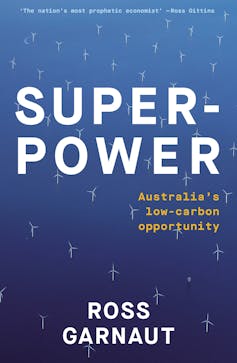 6 November 2019, The Conversation. Australia could fall apart under climate change. But there’s a way to avoid it. Professor Ross Garnaut: Four years ago in December 2015, every member of the United Nations met in Paris and agreed to hold global temperature increases to 2°C, and as close as possible to 1.5°C. The bad news is that four years on the best that we can hope for is holding global increases to around 1.75°C. We can only do that if the world moves decisively towards zero net emissions by the middle of the century. A failure to act here, accompanied by similar paralysis in other countries, would see our grandchildren living with temperature increases of around 4°C this century, and more beyond. I have spent my life on the positive end of discussion of Australian domestic and international policy questions. But if effective global action on climate change fails, I fear the challenge would be beyond contemporary Australia. I fear that things would fall apart. There is reason to hope. It’s not all bad news. What we know today about the effect of increased concentrations of greenhouse gases broadly confirms the conclusions I drew from available research in previous climate change reviews in 2008 and 2011. I conducted these for, respectively, state and Commonwealth governments, and a federal cross-parliamentary committee. But these reviews greatly overestimated the cost of meeting ambitious reduction targets. READ MORE HERE
6 November 2019, The Conversation. Australia could fall apart under climate change. But there’s a way to avoid it. Professor Ross Garnaut: Four years ago in December 2015, every member of the United Nations met in Paris and agreed to hold global temperature increases to 2°C, and as close as possible to 1.5°C. The bad news is that four years on the best that we can hope for is holding global increases to around 1.75°C. We can only do that if the world moves decisively towards zero net emissions by the middle of the century. A failure to act here, accompanied by similar paralysis in other countries, would see our grandchildren living with temperature increases of around 4°C this century, and more beyond. I have spent my life on the positive end of discussion of Australian domestic and international policy questions. But if effective global action on climate change fails, I fear the challenge would be beyond contemporary Australia. I fear that things would fall apart. There is reason to hope. It’s not all bad news. What we know today about the effect of increased concentrations of greenhouse gases broadly confirms the conclusions I drew from available research in previous climate change reviews in 2008 and 2011. I conducted these for, respectively, state and Commonwealth governments, and a federal cross-parliamentary committee. But these reviews greatly overestimated the cost of meeting ambitious reduction targets. READ MORE HERE UNDERSTANDING CLIMATE EMERGENCY & LOCAL GOVERNMENT: Is climate an emergency, what does emergency mode look like, and what is the role of local government councils? This 8-page guide looks at an “all hands on deck” response to existential climate risks. Access Breakthrough reports here, guides here, papers here
UNDERSTANDING CLIMATE EMERGENCY & LOCAL GOVERNMENT: Is climate an emergency, what does emergency mode look like, and what is the role of local government councils? This 8-page guide looks at an “all hands on deck” response to existential climate risks. Access Breakthrough reports here, guides here, papers here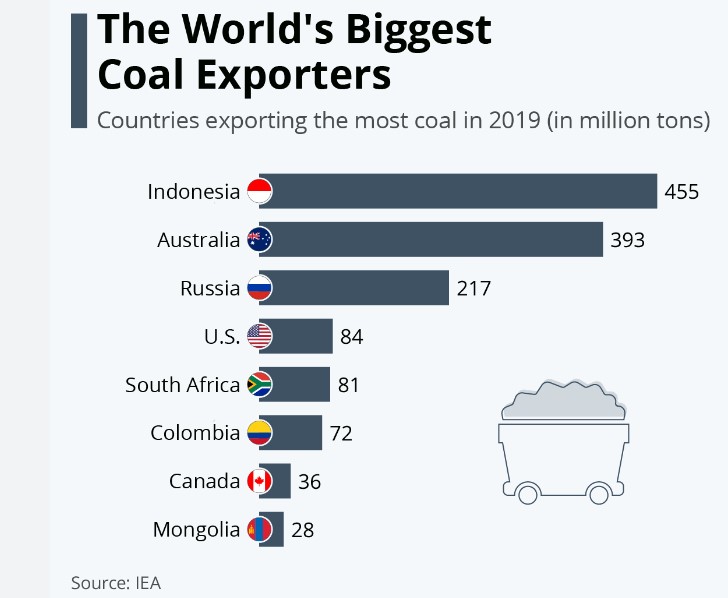
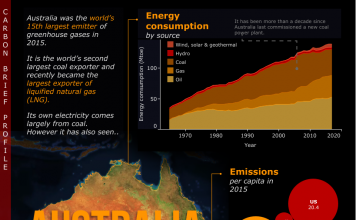
Gavin Schmidt provides some clarity on – The best case for worst case scenarios: Scientists have been looking at best, middling and worst case scenarios for anthropogenic climate change for decades. For instance, Stephen Schneider himself took a turn back in 2009. And others have postulated both far more rosy and far more catastrophic possibilities as well (with somewhat variable evidentiary bases)….. However, I’m not specifically interested in discussing these articles or reports (many others have done so already), but rather why it always so difficult and controversial to write about the worst cases.
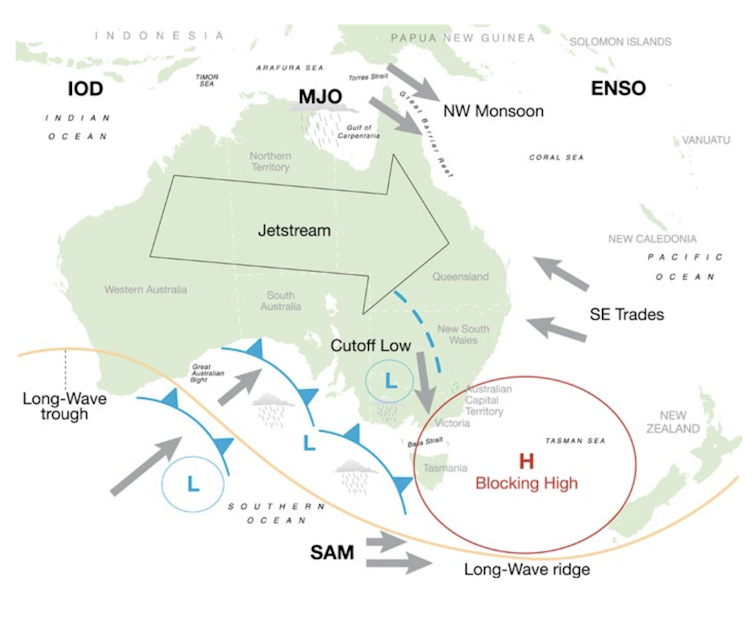
14 August, VOX, The West (California) is on fire … again. The fire season now runs almost year-round, and 2018 is already worse than usual in California, Colorado, and Oregon. Wildfires have almost become a year-round threat in some parts of the western United States. From Colorado to California, it feels like the blazes from last year never went out. Flames ignited forests and chaparral virtually nonstop in 2017, and the year ended with record infernos in Southern California that burned well into 2018. Officials don’t refer to “fire seasons anymore but rather to fire years,” Jennifer Jones, a spokesperson for the National Interagency Fire Center, told me in an email. The NIFC reports that this year, wildfires have burned more than 5.6 million acres, about 27 percent above the average since 2008. At the moment, 15 states are reporting large fires, from Alaska to New Mexico. Read More here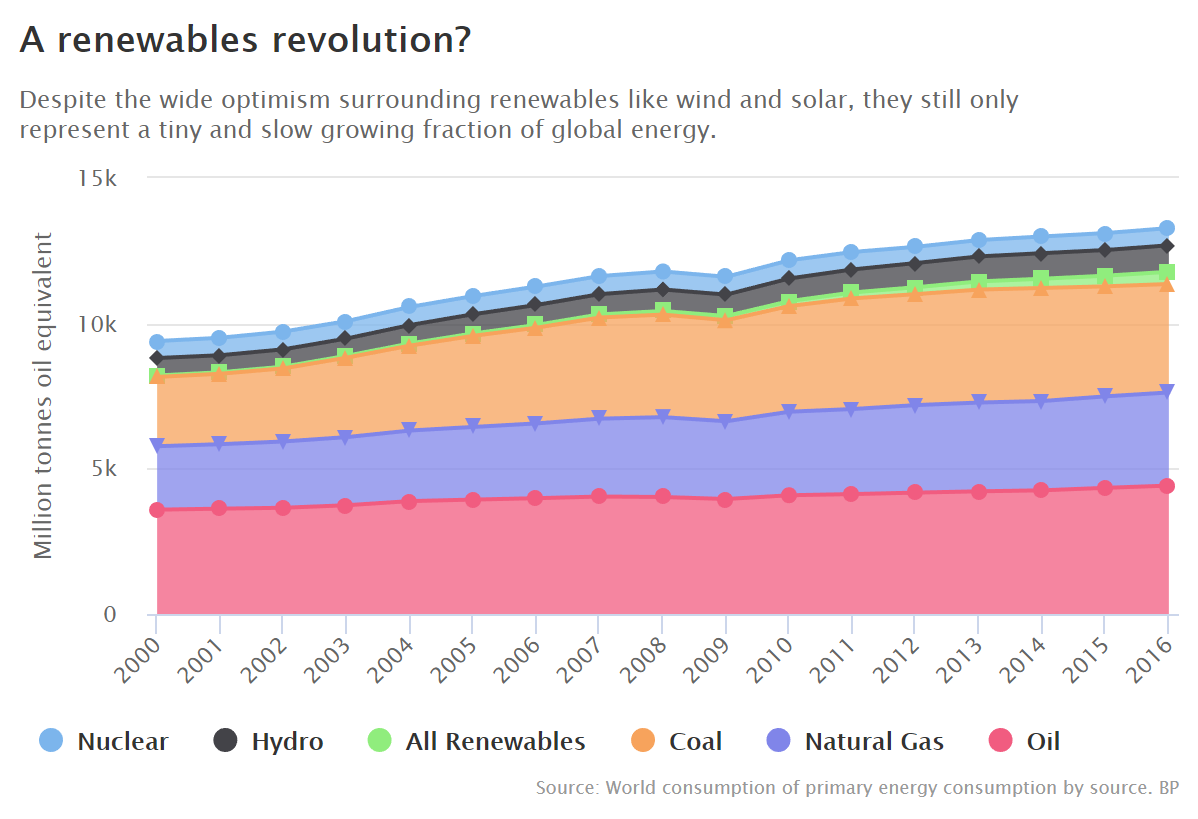
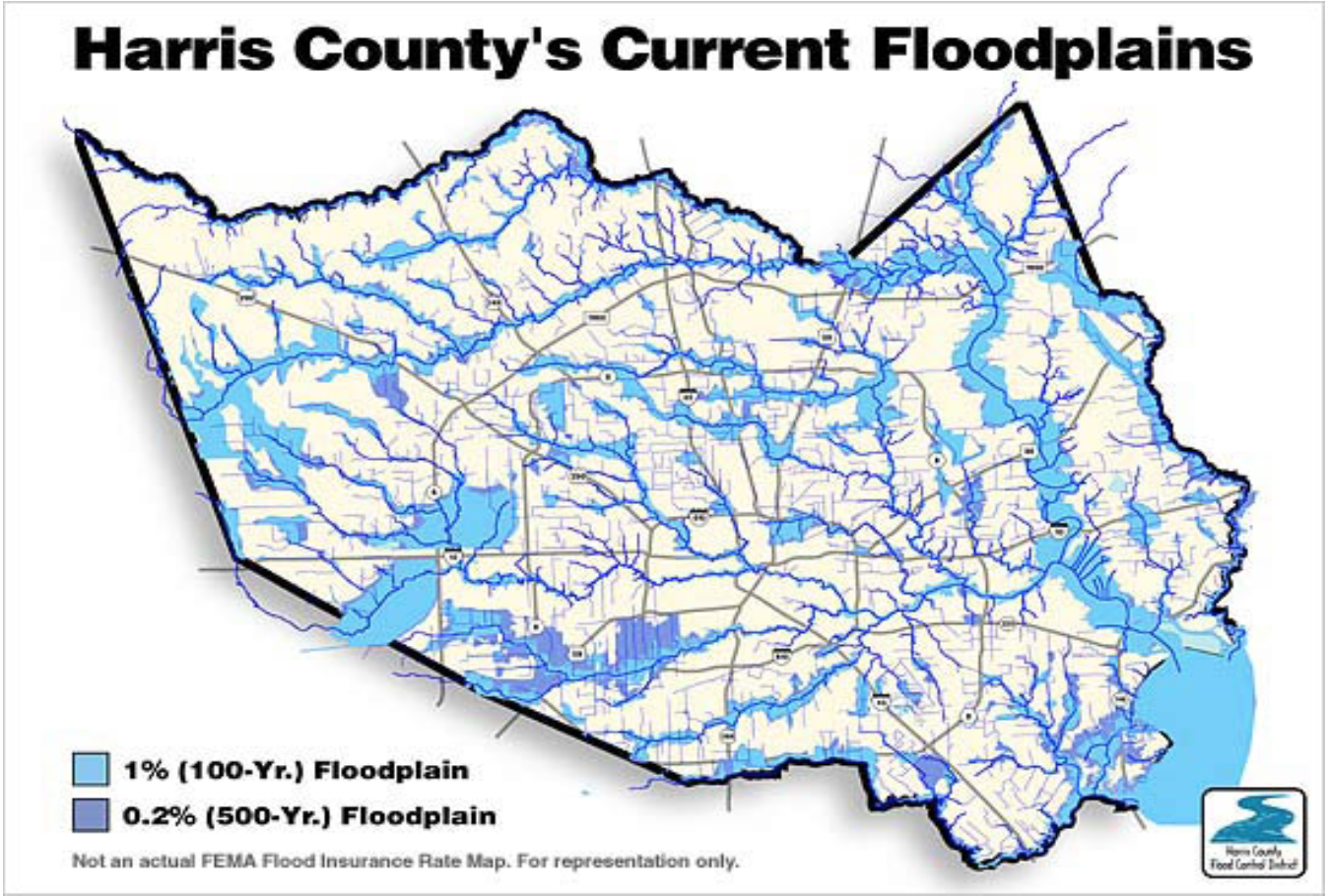 28 August 2017, VOX, The “500-year” flood, explained: why Houston was so under prepared for Hurricane Harvey. It’s the city’s third “500-year” flood in the past three years. It’s difficult to comprehend the scale of the flooding and devastation that Hurricane Harvey and its aftermath are wreaking on the Houston area. Weather experts call the storm unprecedented, and note that it’s gone beyond even the most pessimistic forecasts. In the final reckoning, it’s certain that Harvey will be classified a 500-year flood — and maybe even a 1,000-year flood. But those terms can be a bit misleading — especially when high-profile people, like the president of the United States, confuse the issue by calling Harvey “a once in 500 year flood.” In theory, a 500-year flood is something that has a 1-in-500 shot of happening in any given year — in other words, the sort of event that’s so rare that it might not make sense to plan around the possibility of it happening. The problem is that 500-year floods are happening more often than probability predicts — especially in Houston. And, especially in Houston, prevention planning hasn’t evolved to acknowledge that a “500-year” flood isn’t really a 1-in-500 chance anymore. “500-year” floods are based not on history, but on probability. The severity of floods tends to get put in terms of years: a 100-year flood, a 500-year flood, a 1,000-year flood. But this isn’t an assessment of “the worst flood in” that time — places like Houston don’t actually have detailed weather records going back to 1017 AD, after all. Read More here
28 August 2017, VOX, The “500-year” flood, explained: why Houston was so under prepared for Hurricane Harvey. It’s the city’s third “500-year” flood in the past three years. It’s difficult to comprehend the scale of the flooding and devastation that Hurricane Harvey and its aftermath are wreaking on the Houston area. Weather experts call the storm unprecedented, and note that it’s gone beyond even the most pessimistic forecasts. In the final reckoning, it’s certain that Harvey will be classified a 500-year flood — and maybe even a 1,000-year flood. But those terms can be a bit misleading — especially when high-profile people, like the president of the United States, confuse the issue by calling Harvey “a once in 500 year flood.” In theory, a 500-year flood is something that has a 1-in-500 shot of happening in any given year — in other words, the sort of event that’s so rare that it might not make sense to plan around the possibility of it happening. The problem is that 500-year floods are happening more often than probability predicts — especially in Houston. And, especially in Houston, prevention planning hasn’t evolved to acknowledge that a “500-year” flood isn’t really a 1-in-500 chance anymore. “500-year” floods are based not on history, but on probability. The severity of floods tends to get put in terms of years: a 100-year flood, a 500-year flood, a 1,000-year flood. But this isn’t an assessment of “the worst flood in” that time — places like Houston don’t actually have detailed weather records going back to 1017 AD, after all. Read More here
Term
Likelihood of the outcome
Virtually certain
>99% probability
Extremely likely
>95% probability
Very likely
>90% probability
Likely
>66% probability
More likely than not
>50% probability
About as likely as not
33 to 66% probability
Unlikely
<33% probability
Extremely unlikely
<5% probability
Exceptionally unlikely
<1% probability

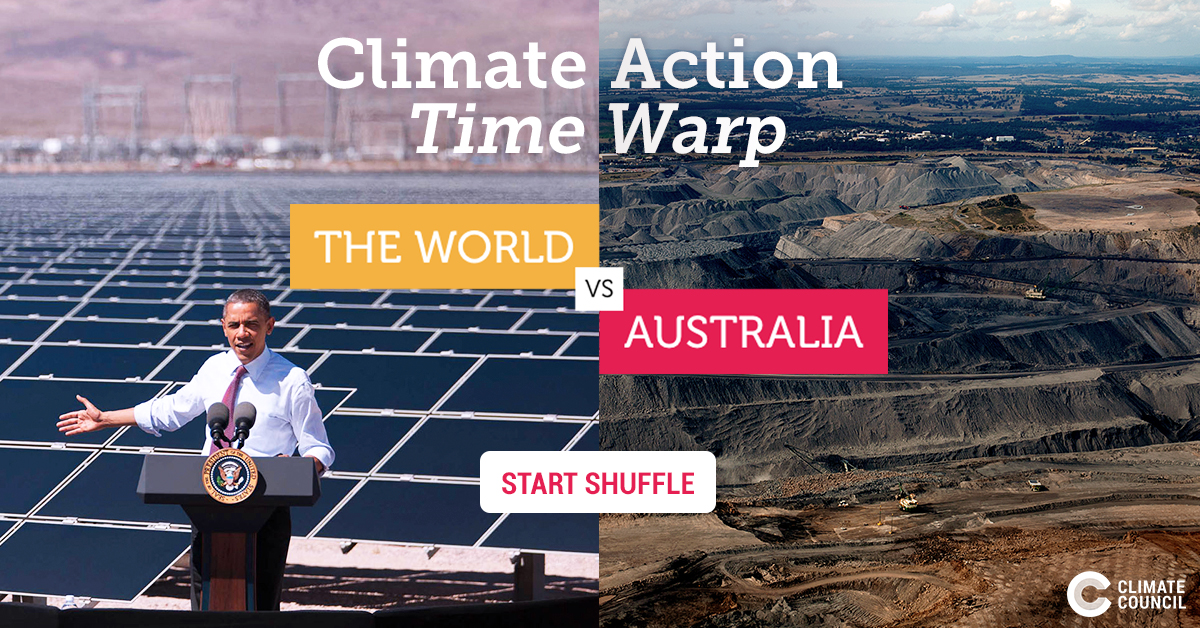
Needing some perspective in the debate?

 Global Challenges Foundation: How can we make something as abstract and complex as risk into something comprehensible? We believe that a key to doing this lies in being able to compare the probability of catastrophes so great that their consequences are unimaginable, with the likelihood of minor events which we must face on a daily basis. It is one thing to say that, with current levels of greenhouse gases, the risk of the global temperature rising by six degrees is 0.5 percent. But explaining that this corresponds to an increase in the number of aviation accidents from 30 a year to more than 400 a day gives a different perspective, and it is here that the risk and opportunity indicator comes into the picture. Click on graphic to take you to GCF’s interactive RISK INDICATOR that provides a range of options to choose from – PPM; degrees, databases and another risk to compare it with. For example: PPM of 400; 2 degree warming, an IPCC optimistic database and compared to dying in a terrorist attack = Exceedance Probability of 33.5% compared to dying in a terrorist attack of 0.00018%. Have a go….
Global Challenges Foundation: How can we make something as abstract and complex as risk into something comprehensible? We believe that a key to doing this lies in being able to compare the probability of catastrophes so great that their consequences are unimaginable, with the likelihood of minor events which we must face on a daily basis. It is one thing to say that, with current levels of greenhouse gases, the risk of the global temperature rising by six degrees is 0.5 percent. But explaining that this corresponds to an increase in the number of aviation accidents from 30 a year to more than 400 a day gives a different perspective, and it is here that the risk and opportunity indicator comes into the picture. Click on graphic to take you to GCF’s interactive RISK INDICATOR that provides a range of options to choose from – PPM; degrees, databases and another risk to compare it with. For example: PPM of 400; 2 degree warming, an IPCC optimistic database and compared to dying in a terrorist attack = Exceedance Probability of 33.5% compared to dying in a terrorist attack of 0.00018%. Have a go….
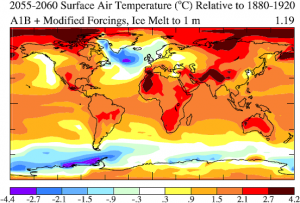 We conclude that the 2°C global warming “guardrail”, affirmed in the Copenhagen Accord (2009), does not provide safety, as such warming would likely yield sea level rise of several meters along with numerous other severely disruptive consequences for human society and ecosystems. The Eemian, less than 2°C warmer than pre-industrial Earth, itself provides a clear indication of the danger, even though the orbital drive for Eemian warming differed from today’s human-made climate forcing. Ongoing changes in the Southern Ocean, while global warming is less than 1°C, provide a strong warning, as observed changes tend to confirm the mechanisms amplifying change. Predicted effects, such as cooling of the surface ocean around Antarctica, are occurring even faster than modeled.
We conclude that the 2°C global warming “guardrail”, affirmed in the Copenhagen Accord (2009), does not provide safety, as such warming would likely yield sea level rise of several meters along with numerous other severely disruptive consequences for human society and ecosystems. The Eemian, less than 2°C warmer than pre-industrial Earth, itself provides a clear indication of the danger, even though the orbital drive for Eemian warming differed from today’s human-made climate forcing. Ongoing changes in the Southern Ocean, while global warming is less than 1°C, provide a strong warning, as observed changes tend to confirm the mechanisms amplifying change. Predicted effects, such as cooling of the surface ocean around Antarctica, are occurring even faster than modeled.
About Us




